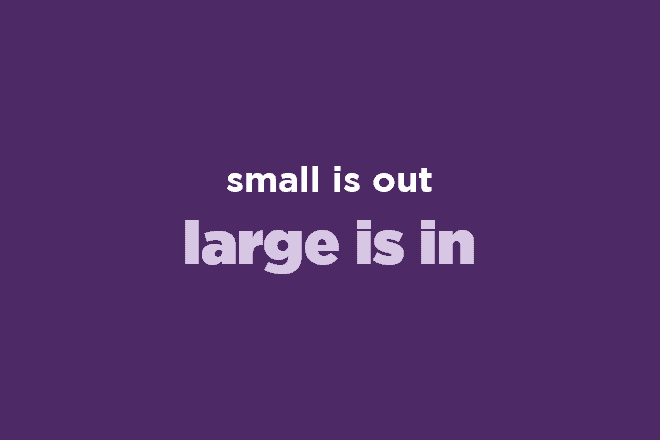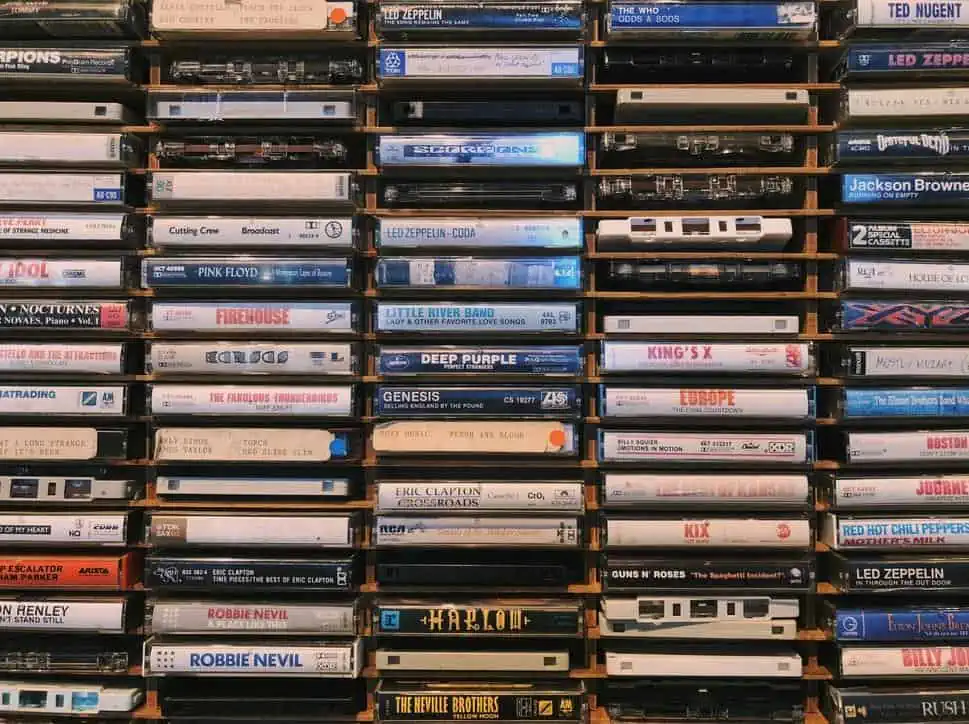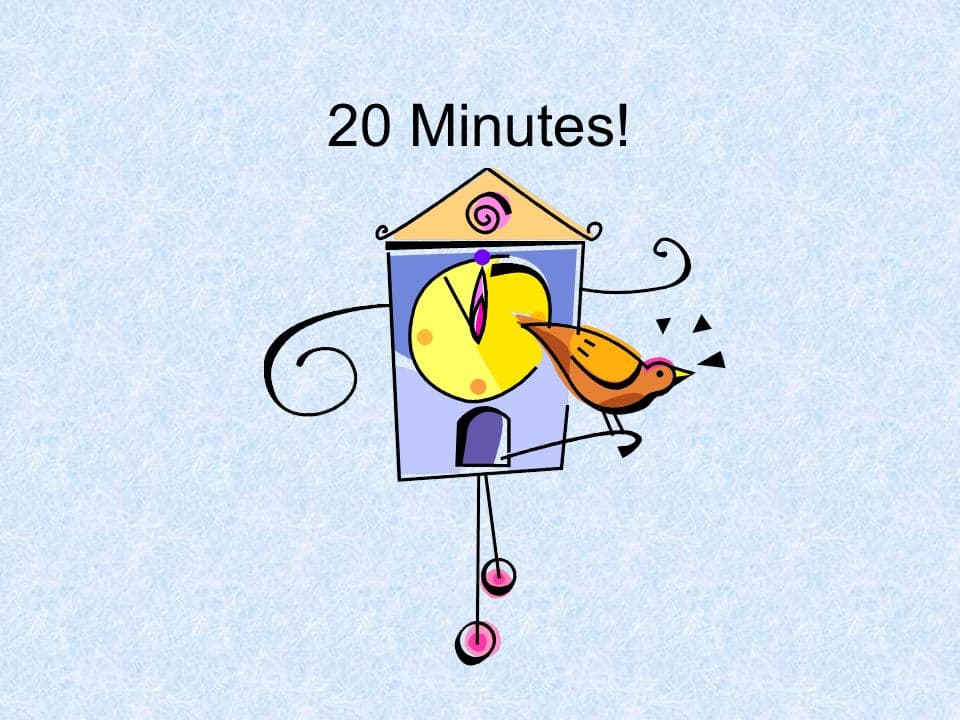我們不認識你,但我們保證 您的回饋。 經歷過 PowerPoint 簡報 太久了你已經看了 25 張投影片,花了 15 分鐘,你的開放態度已經被大量的文字徹底擊垮了。
好吧,如果你是資深行銷專家 Guy Kawasaki,你會確保這種事情不會再發生。
你發明了 10 20 30 規則。它是 PowerPoint 簡報者的聖杯,也是讓簡報更具吸引力、更具轉換力的指路明燈。
在 AhaSlides,我們熱愛精彩的示範。我們在這裡為您提供有關 10 20 30 規則以及如何在您的研討會、網絡研討會和會議中實施它。
Overview
| 誰為幻燈片發明了 10-20-30 規則? | 蓋伊·川崎 |
| PowerPoint 中的 1 6 6 規則是什麼? | 1 個主要思想,6 個要點,每點 6 個單詞 |
| 公開演講的 20 分鐘規則是什麼? | 人們可以收聽的最長時間。 |
| 誰發明了簡報? | VCN執行視覺 |
目錄
AhaSlides 的更多提示
什麼是 10 20 30 規則?
但是, 10-20-30 PowerPoint 規則是在您的演示文稿中要遵守的 3 條黃金原則的集合。
規則是,你的演示應該…
- 最多包含 10張幻燈片
- 最大長度為 20分鐘
- 有一個最低限度 字體大小 30
Guy Kawasaki 提出這條規則的全部原因是為了做演講 更具吸引力.
10 20 30 乍一看,這條規則可能限制性太強,但正如當今注意力危機中所必需的那樣,它是一項幫助您用最少的內容產生最大影響的原則。
讓我們潛入……
10 張幻燈片
許多人對「20分鐘的演講需要多少張幻燈片?」或「40分鐘的演講需要多少張幻燈片?」這樣的問題感到困惑。 Guy Kawasaki 說 十張幻燈片 「是頭腦所能承受的」。你的簡報最多應在10張投影片中獲得10分。
演講的自然傾向是嘗試向觀眾傳達盡可能多的信息。觀眾並不是像海綿一樣吸收訊息; 他們需要時間和空間來處理 正在呈現的內容。
對於那些希望進行完美投球展示的投手, Guy Kawasaki 已經為您準備好了 10 張幻燈片:
- 稱謂
- 問題/機會
- 價值主張
- 基礎魔法
- 商業模式
- 上市計劃
- 競爭分析
- 管理團隊
- 財務預測和關鍵指標
- 當前狀態、迄今為止的成就、時間表和資金使用情況。
但請記住, 10-20-30 排除 不僅適用於商業如果你是大學講師,在婚禮上發表演講,或試圖讓你的朋友加入傳銷計劃,那麼 時刻 一種限制所用幻燈片數量的方法。
將您的幻燈片保持在緊湊的十位可能是幻燈片中最具挑戰性的部分 10 20 30 規則,但也是最重要的。
當然,你有很多話要說,但每個人不是都會提出自己的想法嗎?例如在大學演講,或是幫朋友推薦康寶萊?把內容精簡到10張或更少,然後接下來的部分 10 20 30 規則將遵循。
20分鐘
如果你曾經 關掉 Netflix Original 的一集,因為它長達一個半小時,想想世界各地那些正在觀看長達一小時的演講的可憐觀眾。
中間部分 10 20 30 規則說演示文稿的長度不應超過辛普森一家的一集。
這是理所當然的,因為如果大多數人甚至不能完全集中精力看完第三季的精彩 蝙蝠的荷馬,他們將如何安排有關下個季度預計掛繩銷售的 40 分鐘演示?
完美的 20 分鐘演示
- 簡介 (1分鐘) – 不要被開場白的華麗和表演風格所迷惑。你的聽眾已經知道他們為什麼來這裡,拖長開場白會讓他們覺得這場演講會 擴展. 冗長的介紹甚至在製作開始之前就消除了焦點。
- 提出問題/闡明問題 (4 分鐘) – 直奔主題,直擊本次演講試圖解決的問題。提出作品的核心主題,並透過數據和/或實際案例強調其重要性。收集觀眾意見,以集中註意力並闡明問題的突出性。
- 主體 (13 分鐘) – 當然,這正是演示的全部目的。提供信息,嘗試回答或解決你的疑問或問題。提供視覺事實和數據來支持你的論述,並在幻燈片之間過渡,形成你論點的連貫主體。
- 結語 (2 分鐘) – 提供問題摘要以及你提出的解決方案。這可以幫助聽眾在問答環節提問之前鞏固他們掌握的資訊。
正如 Guy Kawasaki 所說,20 分鐘的演示會留下 40 分鐘的提問時間。 這是一個很好的目標比例,因為它鼓勵觀眾參與。
AhaSlides' 問答功能 是解決會後問題的完美工具。無論您是現場演示還是線上演示,互動式問答投影片都能激發觀眾的興趣,讓您能夠解答他們真正的疑問。
💡 20 分鐘聽起來還是太長了? 為什麼不嘗試 5分鐘演示?
30 磅字體

觀眾對 PowerPoint 簡報最大的不滿之一是簡報者傾向於大聲朗讀投影片。
有兩個原因導致這一切都無所適從 10-20-30 規則代表。
首先是聽眾讀的比演講者說的快,造成不耐煩和注意力不集中。 第二個是它表明幻燈片包括 太多的文字信息.
那麼,關於簡報投影片中的字體使用,哪一項是正確的?
這是最後一段的地方 10 20 30 規則來了。川崎先生絕對接受 不少於 30pt。 一種字體 當談到 PowerPoint 上的文字時,他有兩個理由…
- 限制每張幻燈片的文本量 – 用一定數量的單字結尾,代表你不會想簡單地大聲朗讀訊息。你的聽眾會記住 他們所看到的 80% 和他們閱讀的僅 20%,所以盡量減少文字。
- 分解要點—— 更少的文字意味著更容易消化的更短的句子。 最後一部分 10 20 30 規則切掉了華夫餅,直奔主題。
假設你正在考慮 30pt 字體,但這個字體對你來說不夠激進,看看行銷大師 塞思戈丁 建議:
一張幻燈片上不超過六個字。 曾經。 沒有任何演示文稿如此復雜以至於需要打破此規則。
塞思戈丁
是否要在幻燈片上包含 6 個或更多單字取決於你,但無論如何,戈丁和川崎傳達的訊息是響亮而明確的: 少文字, 更多介紹.
使用 3 10 20 規則的 30 個理由
不要只相信我們說的話。以下是 Guy Kawasaki 本人的回顧 10 20 30 規則並解釋他為什麼想出它。
因此,我們討論瞭如何從 10 20 30 規則。從川崎的演講開始,我們來談談川崎原則如何提升你的演講水準。
- 更吸引人 – 簡短的演講和較少的文字自然會鼓勵更多的演講和視覺效果。文字很容易讓人迷失,但最精彩的演講體現在演講者所說的內容上,而不是他們所展示的內容。
- 更直接 – 繼 10 20 30 規則提升了必要的信息並削減了多餘的信息。 當你強迫自己讓它盡可能簡短時,你自然會優先考慮關鍵點並讓你的聽眾專注於你想要的東西。
- 更難忘 - 集中註意力並提供有吸引力的、以視覺為中心的演示會產生更特別的結果。 您的聽眾會給您的演示文稿留下正確的信息和更積極的態度。
您可能是數百萬轉向在線演示的演示者之一。 如果是這樣, 10 20 30 規則可以是眾多規則之一 使您的網絡研討會更具吸引力的技巧.
演示文稿的更多重要提示
還記得我們在介紹中談到的那段經歷嗎? 那個讓你想要融入地板以避免另一次單向、長達一小時的演示的痛苦?
嗯,它有一個名字: PowerPoint 之死。 我們有 PowerPoint 中關於死亡的整篇文章 以及如何避免在演講中犯下這種錯誤。
試用 10-20-30 rule 是一個很好的起點,但這裡有一些其他方法可以為您的演示文稿增添趣味。
技巧1:使其可視化
Seth Godin 提到的「每張投影片 6 個字」規則可能看起來有點限制,但它的重點是讓你的投影片 更直觀.
更多的視覺效果有助於闡明你的概念,並加深觀眾對關鍵點的記憶。你可以期待他們離開時 65% 的信息被記住 如果你使用 圖片, 視頻, 道具 圖表.
將其與 10% 純文字投影片的記憶率,並且您有一個令人信服的案例可以直觀呈現!
技巧2——用黑色
來自 Guy Kawasaki 的另一個專業提示,在這裡。 黑底白字是 更強大 而不是白色背景和黑色文本。
黑色背景尖叫 敬業精神 莊嚴. 不僅如此,淺色文本(最好是有點灰而不是純白色)更容易閱讀和瀏覽。
彩色背景下的白色標題文本也更加突出。 一定要充分利用您對黑色和彩色背景的使用來給人留下深刻印象而不是壓倒一切。
技巧3——使其具有互動性

您可能討厭劇院裡的觀眾參與,但同樣的規則並不適用於演示。
無論您的主題是什麼,您都應該始終 找到一種方法使其具有交互性. 讓您的觀眾參與進來對於提高注意力、使用更多視覺效果和創建關於您的主題的對話非常有用,這有助於觀眾感到被重視和被傾聽。
在當今的線上會議和遠距工作時代,像 啊哈幻燈片 對於建立這種對話至關重要。您可以使用 互動投票, 問答幻燈片, 詞云 以及更多來收集和說明您的數據,然後甚至使用 測驗 來鞏固它。
想 免費試用嗎?點擊下面的按鈕即可加入 AhaSlides 上成千上萬的快樂用戶!
特色圖片禮貌 生活黑客.
常見問題(FAQ)
什麼是 10/20/30 演示規則?
這意味著每個演示文稿應該只有十張幻燈片,不超過二十分鐘,並且不包含小於 30 磅的字體。
10 20 30 規則如何有效?
正常人無法理解一次商務會議中的十張幻燈片。
什麼是 50-30-20 法則?
別誤會,它們不是為了展示,因為這條規則建議將每月工資的 50% 用於滿足需求,30% 用於滿足願望,20% 用於儲蓄











